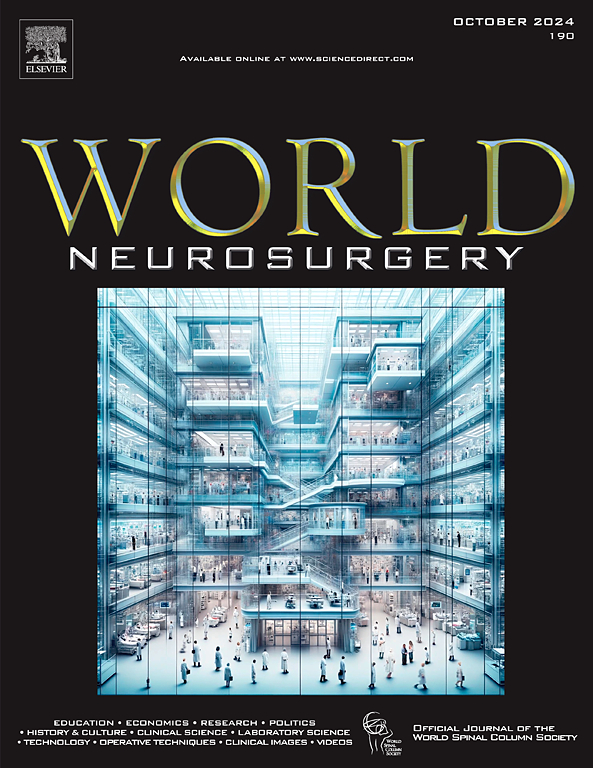Understanding Risk Factors for Postoperative Seizure Following Surgical Treatment and Middle Meningeal Artery Embolization of Chronic Subdural Hematomas
IF 1.9
4区 医学
Q3 CLINICAL NEUROLOGY
引用次数: 0
Abstract
Objective
Chronic subdural hematoma (cSDH) is often associated with clinical seizures, with incidence rates ranging from 2.6% to 23%. While risk factors like hematoma size and craniotomy with membranectomy are well established, the impact of middle meningeal artery embolization (MMAe) remains underexplored. This study aims to evaluate postoperative seizure rates in cSDH patients treated with MMAe and compare them with those undergoing craniotomy or burr hole evacuation.
Methods
A bi-institutional retrospective review of 580 cSDH cases treated with burr hole evacuation (with or without MMAe), craniotomy (with or without MMAe), or MMAe alone from 2017 to 2021 was conducted. Fisher exact tests, t tests, and analysis of variance were used to analyze patient, hematoma, and procedural characteristics. Logistic regression identified factors associated with postoperative seizures, complications, and recurrence requiring reoperation. Linear regression was used to assess factors influencing length of hospital stay.
Results
Among 580 cases, postoperative seizure rates were 4.2% for burr hole evacuation, 1.3% for burr hole evacuation with MMAe, 12.1% for craniotomy, 11.8% for craniotomy with MMAe, and 4.3% for MMAe alone. Logistic regression showed significantly higher seizure risk in craniotomy with MMAe vs. burr hole with MMAe (odds ratio [OR] 9.14, 95% CI 1.02-81.66, P = 0.047). Standalone MMAe had a lower complication risk than standalone burr hole drainage (OR 0.37, 95% CI 0.16-0.84, P = 0.017) or craniotomy (OR 0.37, 95% CI 0.17-0.79, P = 0.01).
Conclusions
Burr hole evacuation with MMAe had the lowest postoperative seizure rate, while MMAe alone was associated with the lowest risk of overall postoperative complications.
求助全文
约1分钟内获得全文
求助全文
来源期刊

World neurosurgery
CLINICAL NEUROLOGY-SURGERY
CiteScore
3.90
自引率
15.00%
发文量
1765
审稿时长
47 days
期刊介绍:
World Neurosurgery has an open access mirror journal World Neurosurgery: X, sharing the same aims and scope, editorial team, submission system and rigorous peer review.
The journal''s mission is to:
-To provide a first-class international forum and a 2-way conduit for dialogue that is relevant to neurosurgeons and providers who care for neurosurgery patients. The categories of the exchanged information include clinical and basic science, as well as global information that provide social, political, educational, economic, cultural or societal insights and knowledge that are of significance and relevance to worldwide neurosurgery patient care.
-To act as a primary intellectual catalyst for the stimulation of creativity, the creation of new knowledge, and the enhancement of quality neurosurgical care worldwide.
-To provide a forum for communication that enriches the lives of all neurosurgeons and their colleagues; and, in so doing, enriches the lives of their patients.
Topics to be addressed in World Neurosurgery include: EDUCATION, ECONOMICS, RESEARCH, POLITICS, HISTORY, CULTURE, CLINICAL SCIENCE, LABORATORY SCIENCE, TECHNOLOGY, OPERATIVE TECHNIQUES, CLINICAL IMAGES, VIDEOS
 求助内容:
求助内容: 应助结果提醒方式:
应助结果提醒方式:


